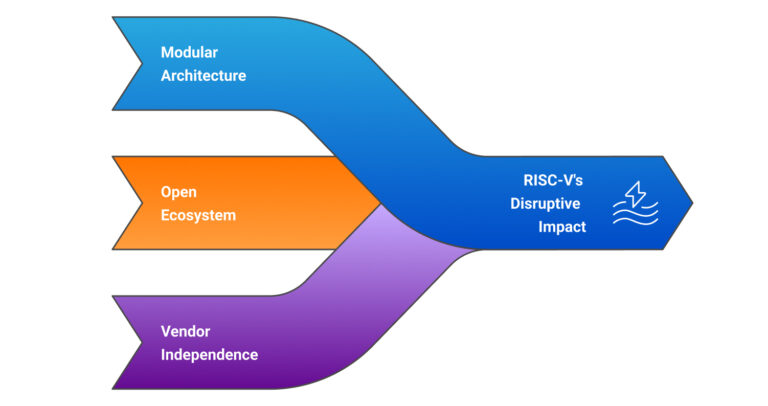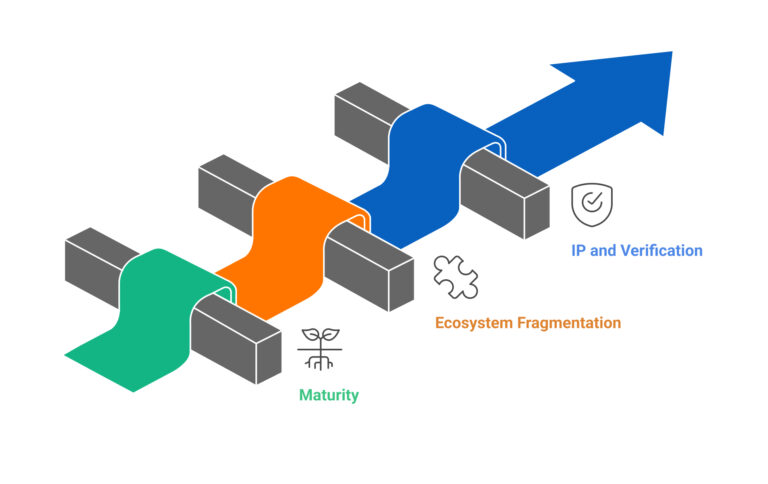In 2025, embedded system design is experiencing a pivotal transformation driven by RISC-V. An open-standard Instruction Set Architecture (ISA) that has matured from academic origins to a formidable force in industry. As more organizations explore alternatives to proprietary architectures like ARM and x86, RISC-V is emerging as a game-changer, offering openness, scalability, and customization. This shift is especially relevant in the embedded solution sector, where flexibility, cost efficiency, and time-to-market are critical to staying competitive.
The Foundation of RISC-V: A Brief Overview
RISC-V, developed at the University of California, Berkeley, is a Reduced Instruction Set Computing (RISC) architecture. Unlike traditional ISAs, RISC-V is open and royalty-free, allowing designers to build processors and systems without being locked into vendor-specific constraints.
In conventional embedded systems, developers often face restrictions due to licensing fees, limited customization, and proprietary development tools. RISC-V eliminates these hurdles, giving engineers the freedom to tailor processor architectures for specific applications, making it ideal for embedded system companies striving for innovation on a budget.
What Makes RISC-V a Disruptive Force?

The power of RISC-V lies in its modularity and openness. Here are some key features that differentiate it from traditional ISAs:
- Modular Architecture: RISC-V offers a simple base ISA with optional extensions for multiplication, atomic operations, floating-point math, and more. This allows engineers to include only the features needed for a specific application, which streamlines embedded system design and reduces power consumption.
- Open Ecosystem: With support from organizations like RISC-V International, the architecture benefits from a global community of contributors. This shared development accelerates innovation and reduces reliance on single vendors.
- Vendor Independence: Designers aren’t locked into specific hardware vendors or development environments, promoting flexibility in sourcing components and development tools.
These qualities are making RISC-V particularly attractive to those offering embedded design services, as it allows more tailored and cost-effective solutions for clients.
A deep dive into Advancements in RISC-V Architecture for Custom Chip Design
Applications of RISC-V in 2025
RISC-V is no longer confined to academic use or experimental projects. Its reach now spans numerous industries:
- Automotive Systems: RISC-V cores are being used in advanced driver-assistance systems (ADAS), in-vehicle infotainment, and even safety-critical control systems.
- Consumer Electronics: Smart TVs, wearables, and home automation devices increasingly rely on RISC-V for lower power usage and greater control over firmware customization.
- Industrial IoT: RISC-V is a perfect fit for edge devices, offering low-power computing and secure data processing at the edge of networks.
- Healthcare Devices: From diagnostic tools to portable monitoring systems, RISC-V allows greater security and reliability in embedded medical devices.
This versatility makes RISC-V an essential asset for any embedded system company looking to diversify their application portfolio.
Tools, Community, and Ecosystem Growth
The growing adoption of RISC-V is supported by a rapidly evolving ecosystem. In 2025, major industry players such as Western Digital, NVIDIA, and Google are investing heavily in RISC-V development.
Furthermore, a wide range of tools is now available, including:
- Compilers like GCC and LLVM with robust RISC-V support
- Debugging Tools, including OpenOCD and GDB
- Operating Systems like FreeRTOS, Zephyr, and even Linux distributions tailored to RISC-V
These resources are invaluable for professionals working in embedded design services, enabling faster development, easier debugging, and more seamless system integration.
Security and Compliance in RISC-V
Security is a growing concern in embedded system design, especially with the proliferation of IoT devices. RISC-V’s open-source nature facilitates transparent verification and auditing of processor behavior, allowing engineers to identify and mitigate vulnerabilities early in the design cycle.
Moreover, recent extensions like RISC-V PMP (Physical Memory Protection) and upcoming Secure Execution Environment specifications enable the creation of secure boot and encrypted execution pathways. For embedded system companies operating in regulated industries like healthcare or finance, these features are essential for compliance and data protection.
Challenges and Considerations

Despite its promise, RISC-V is not without challenges:
- Maturity: Some toolchains and development environments are still catching up to those of ARM or x86.
- Ecosystem Fragmentation: The sheer flexibility of RISC-V can lead to inconsistencies across implementations, which can complicate debugging and standardization.
- IP and Verification: Verifying a custom processor based on RISC-V requires considerable expertise, which is why partnering with a seasoned embedded design service provider like Tessolve is often crucial.
Yet, these challenges are actively being addressed by the growing global community and the accelerating support from established chip manufacturers and software companies.
Tessolve: Empowering the RISC-V Ecosystem
At Tessolve, we believe in the disruptive power of RISC-V and are actively working towards empowering our customers to embrace this architecture economically and confidently. As one of the premier embedded system solutions companies, we have integrated support for RISC-V in our engineering capabilities so that our customers can tap the complete stack of services from silicon to system.
Our ArchShift Migration Service provides risk-free, high-productivity migration from proprietary ISAs to RISC-V, speeding development. Pre-silicon design validation, firmware development, board design, and system integration are also available from us, optimized for RISC-V platforms.
Tessolve’s end-to-end solution ensures that organizations utilizing embedded solutions can accelerate the delivery of RISC-V-based products to market with improved security and reduced costs. With our global engineering teams and extensive laboratory infrastructure, we’re spearheading the open-source embedded revolution.
Learn more: Revolutionizing India’s Semiconductor Future: The Power of RISC-V Innovation
The Road Ahead
Looking ahead, RISC-V is in a good position to be a building block for the next generation of computing. For new firms, it is a cheap and versatile entry point. For existing firms, it is a strategic choice not to become dependent on specific vendors.
First and foremost, RISC-V is a perfect fit for the values of modern embedded system design, such as scalable, modular, efficient, and secure. With its broad-based applications and a quickly maturing support platform, the ISA is no longer an abstract academic exercise; it’s a true, successful alternative to the legacy giants.
Conclusion: RISC-V’s Role in Embedded Design
The changeover to RISC-V in 2025 is a tremendous step forward in the methodology of embedded system design. Its open, modular, and affordable architecture puts it in good stead to meet the increasing needs of contemporary embedded applications. For embedded systems and for embedded design service companies, adopting RISC-V is not just a question of being trendy; it is a question of strategic necessity.
With support from key players like Tessolve, which brings deep expertise and a comprehensive embedded solution portfolio, the transition to RISC-V is not just possible; it’s already underway. The future of embedded innovation is open, customizable, and RISC-V powered.
